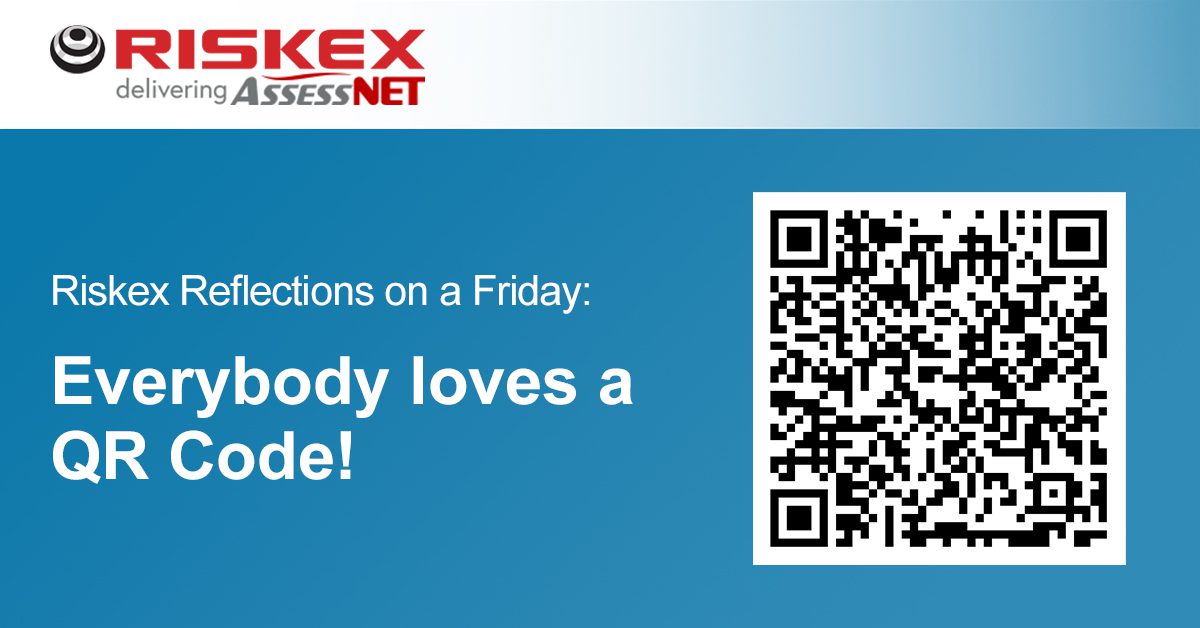
There are many reasons why QR Codes are increasing in popularity when it comes to engaging employees in good health and safety practices; they are easily accessible via smartphones, they provide links to real-time information in a variety of formats and are underpinned by tracking and analytics for compliance purposes.
A growing number of AssessNET clients are using QR codes to engage their employees in improving safety performance – ranging from on-the-spot hazard reporting through to coffee-break DSE assessments and daily walk-around checklists for first aid boxes and visual machinery checks.
How can you promote high levels of health and safety awareness using QR codes? We’ve shared some ideas below:
- Emergency Response Information: Create QR codes that link to emergency response plans, contact numbers, and evacuation routes. Place these QR codes in visible locations throughout your workplace settings. In case of an emergency, individuals can quickly scan the code for vital information.
- Training Materials: Link QR codes to online training resources or instructional videos related to health and safety. This allows employees or students to access training materials conveniently, even if they are away from the classroom or workplace.
- Reporting Hazards: Encourage employees or visitors to report safety hazards or incidents by scanning a QR code that directs them to an incident reporting form. This streamlines the reporting process and helps identify and address issues promptly.
- Safety Policies: Attach QR codes to printed safety policies, manuals, guidelines, or posters. When scanned, these codes can provide users with digital copies of these materials.
- Safety Checklists: Develop QR codes that link to digital safety checklists. Logbooks or inspection forms. Users can access and complete these checklists on their devices, ensuring that safety procedures are followed.
- Personal Protective Equipment (PPE) Information: Affix QR codes to PPE items or their storage containers. Scanning the code can lead to instructions on how to properly wear and maintain the equipment or offer quick access to order replacements.
- Safety Data Sheets (SDS): In industrial or chemical environments, use QR codes on containers that lead to digital SDS for the specific substance. This helps workers quickly access critical safety information.
- Safety Training Certificates: Attach QR codes to safety training certificates, allowing employers or supervisors to verify an employee’s training and certifications instantly.
- Visitor Information: At the entrance of a facility, use QR codes to direct visitors to a page with safety information, visitor guidelines, and emergency contact details.
- COVID-19 and Health Screening: During a pandemic or health crisis, QR codes can link to health screening questionnaires and provide access to COVID-19 guidelines. This can help maintain health and safety standards within a facility.
- Interactive Signage: Install interactive signage with QR codes in high-traffic areas, like lifts or rest areas, to provide safety tips, updates, and relevant information.
- Asset Tracking and Inspections: Use QR codes on equipment and machinery to track maintenance and inspection histories, ensuring that they remain in safe working conditions.
To find out how AssessNET can help drive better safety performance in your business, and how QR codes can help optimise user engagement and streamline processes even further, call us to arrange an online demonstration and free trial
Latest News
Riskex Limited
BizSpace
Linford Forum
18 Rockingham Drive
Milton Keynes
Buckinghamshire
MK14 6LY
What3words reference:
Contact us
Make an enquiry:
Company No. 05174302
VAT No. 844 5092 22


